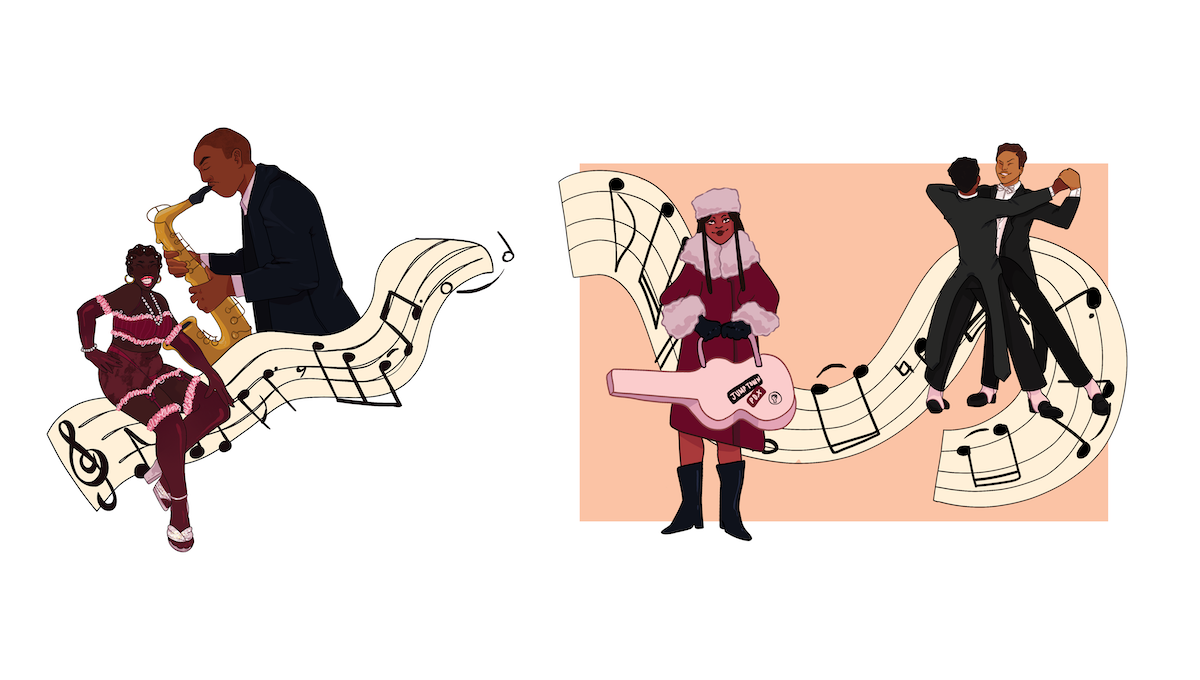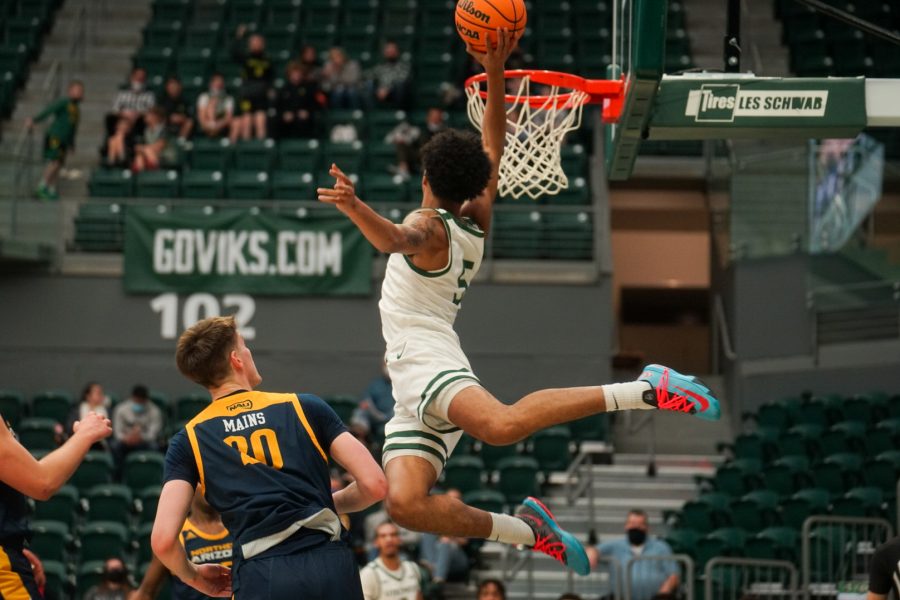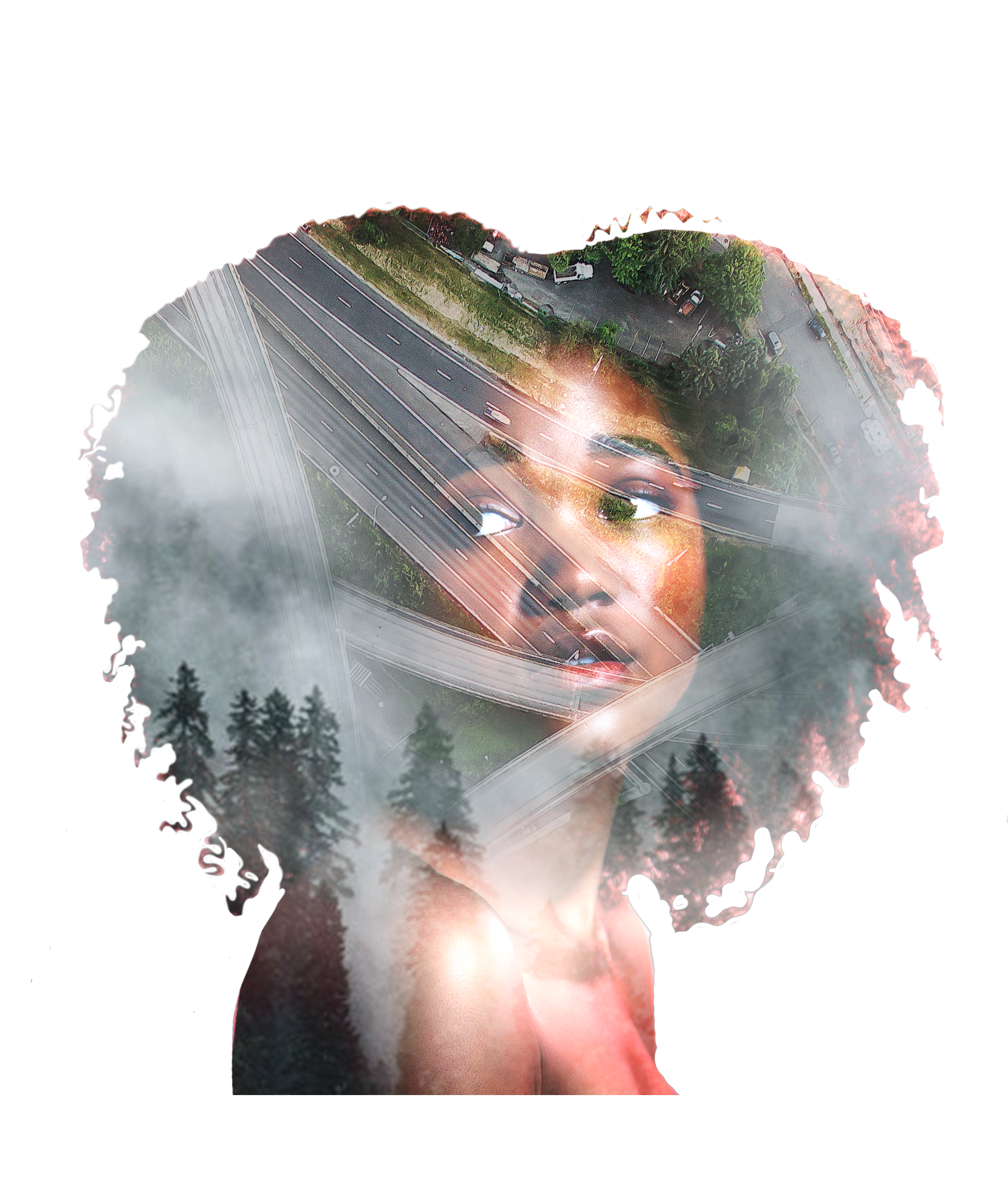Many Portlanders do not realize that there were vibrant Black cultural and artistic movements here not too long ago. Part of the shameful and barbaric historical legacy of settler-colonialism and white supremacy in Portland—and Oregon at large—has been this erasure.
We are regaled in the contemporary musical richness of iconic indie-rock and punk music from the region from artists such as Elliott Smith, The Wipers, Sleater-Kinney, Dead Moon and an impressive array of others, begging a question—why don’t we know about the seminal jazz and soul music that once reigned supreme in North and Northeast Portland? Why are contemporary hip-hop artists and Black artists across the board left out of the conversation by the wider Portland artistic community?
For some background, Black people were initially reluctant to migrate to the Territory of Oregon as the white provisional government of the territory had passed a law—the 1849 Black exclusion law—which candidly emphasized that Oregon was to be “a white man’s territory,” with penalties ranging from public lashings to outright expulsion from the territory.
The impact of the law in banning any Black or multiracial person from living in, working in or “making any contacts in” the state was explicit and profound—Oregon was intended to be a white utopian settlement.
Our conceptions of Oregon as this progressive abolitionist state in opposition to slavery are shattered when we consider that, when Oregon officially entered the union in 1859, the Oregon Constitution explicitly forbade Black people from living anywhere in the state—the only state that did this.
In spite of all of this, some braved the risks, hatred and violence systematically and individually directed at them, and moved to Oregon anyway—Portland in particular. Portland was and still is an important shipping port at the confluence of the Willamette and Columbia Rivers, and here Black workers could find employment in the railroad and shipping industries—and were later hired to build ships at the Kaiser shipyards in the World War II war effort.
In the 1920s, a Black-owned hotel called the Golden West was one of the only prominent businesses that catered to Black workers and their families in the highly segregated city. It was downtown near the train station and rail yards, and hosted performances of the thriving national ragtime, blues and swing jazz acts of the day.
The Golden West didn’t survive the Great Depression and closed its doors in 1931, but Black Portlanders carried these sounds across the river to their segregated Albina neighborhood in the 1940s, establishing what would come to be called Jumptown, a remarkably vibrant entertainment district.
The area boasted hundreds of flourishing Black-owned businesses and a high rate of Black homeownership compared to the rest of Portland and Oregon—then or today.
Prominent venues like Cotton Club, the Dude Ranch, Paul’s Paradise, Savoy, McClendon’s Rhythm Room, Lil’ Sandy’s and Madrona Records became the center of a 24-hour entertainment zone, featuring not only jazz musicians but also tap dancers, strippers and comedians.
In his book Jumptown: the Golden Years of Portland Jazz, Robert Dietsche described the area.
“Racially mixed party people who couldn’t care less that what they were doing [and we were] on the cutting edge of integration in the city that had been called the most segregated north of the Mason-Dixon line.”
A taste of the scope of talent and brilliance that Jumptown boasted in its heyday can be gleaned from recognizing some of the artists who regularly performed and hung out there with giants such as Duke Ellington, Louis Armstrong, Coleman Hawkins, Cab Calloway, Cass Elliot, Sammy Davis Jr. and many other notable musicians.
The first major blow to Jumptown came with the construction of the Memorial Coliseum from 1958–60. The Portland Development Commission declared eminent domain in Lower Albina, and demolished hundreds of Black-owned homes and businesses to build the Coliseum.
An ironic aside—the area has been supposedly revitalized several times throughout the decades as an entertainment district, and nevertheless remains an under-utilized part of the city, when there is not an event at the Moda Center or Coliseum itself, in spite of the vibrant history on which it sits.
The next wound inflicted upon Jumptown and the Black community of Albina was the construction of Interstate 5 in 1963. The national interstate infrastructure projects of the 1960s and 1970s often targeted Black neighborhoods, and Portland did the same. The freeway bisected through the heart of Albina and decimated hundreds of homes—even as similar freeway proposals were shot down in affluent white neighborhoods, including in Portland, where the proposed expansion of Route 26 and Southeast Powell Boulevard into a larger freeway were successfully thwarted by white homeowners in the same time period.
After learning about Jumptown, I have not been able to drive on I-5 by Moda Center, or to bike along NE Broadway or N Williams without thinking about what ghosts are waiting to be excavated in those neighborhoods. Systemic racism and displacement are unfortunately very much still with us here in Portland—and across the United States—today.
Speaking of which, an empty lot that sits at the corner of N Russel and N Williams represents the final blow that ultimately destroyed Jumptown. The whole block—and many around it—was demolished in the 1970s for an expansion of Legacy Emanuel Medical Center.
That empty lot was once the Hill Block where the legendary club Paul’s Paradise was, along with a plethora of thriving Black-owned businesses that served the community around it.
This area was heavily impacted by redlining—the systematic denial of loans by lenders to Black borrowers in areas deemed undesirable using maps with red outlined areas, intended to keep Black folks from living anywhere else in the city. Local Black historian Andrew Oliver has said that “the Hill Block was the heart of the Albina neighborhood, the busiest corner in NE Portland.”
To add insult to injury, that expansion of Legacy Emanuel was never built, and the demolished blocks are still sitting empty almost 50 years later—and neither the hospital nor the city have ever made amends to the community they displaced.
It is important to emphasize here that Black Portlanders protested these abuses. And while they were largely unsuccessful in stopping the freeway that cut through their neighborhoods, the Coliseum that destroyed vibrant Lower Albina or the displacement in Upper Albina caused by the Emanuel Hospital debacle, there have recently been efforts to move the dialogue toward restitution.
Albina Vision Trust is developing a dynamic and forward-thinking plan to bring Black-owned businesses and the Black community back to a reimagined Albina neighborhood in the current Rose Quarter. Setbacks abound, however, not the least of which are questions around the Department of Transportation’s continued efforts to expand I-5 in the area, exacerbating the environmental and social harms of its original construction.
The Black community has been resilient in spite of it all. The Portland chapter of the Black Panthers organized the community to resist these measures throughout the 1960s and 1970s. Many other members of the community rallied to resist and create self-sufficiency in Albina as the city targeted the area for urban renewal throughout the 1980s and into the present.
Today, the Albina Soul Walk raises awareness of this history, and is hosted by former Jumptown club owner Paul Knauls, who has been proclaimed the Mayor of Northeast Portland alongside legendary local musicians Calvin Walker and Norman Sylvester.
The Albina Soul Walk is a one mile self-guided audio tour hosted on the ECHOES mobile application and presented by the Albina Music Trust. It takes participants on a tour of the sites where there were once venues, with music paired to each of the national and local performers who were a part of making them shine.
Paul Knauls is now in his 90s, and sadly anti-Blackness and systemic racism are still major forces in Portland and the U.S. at large. During the 1980s and 1990s, the City of Portland continued its disinvestment in the Black neighborhoods of Albina.
According to Alana Semuels, the Portland Development Commission deemed the area “a blighted slum in need of repair,” after it had ripped out the heart of the neighborhood with its massive infrastructure projects.
The aggressive gentrification we have seen in North Portland and Albina in particular is the contemporary iteration of those same policies. The neighborhood went from 80% Black in the 1960s to under 30% today. Gentrification is yet another form of settler-colonialism.
Further, local law enforcement continue to target Black musical art forms like hip-hop in Portland. There is a direct thread between the harassment and destruction that Black musicians faced in Portland’s Jumptown and the harassment and closure of venues that Black hip-hop artists in this city face today.
Jenni Moore wrote in Travel Portland of a hip-hop show in 2014 featuring local artists Luck One (now known as Hanif), Mikey Vegaz and battle rap champion Illmaculate that was shut down by more than a dozen police and gang enforcement officers. The police closed the street and blocked access to the Blue Monk venue on grounds that there was overcrowding in the basement.
Illmaculate left the venue in protest before even beginning his set.
“I will not perform in this city as long as the blatant targeting of Black culture and minorities congregating is acceptable common practice,” he later tweeted.
The Blue Monk, one of the very few hip-hop venues in all of Portland, subsequently closed down.
Portland is still home to a small but thriving Black music community featuring hip-hop artists like Mic Crenshaw, Jordan Fletcher, Aminé, Vursatyl (of the late Portland group Lifesavas), Danny Sky, in addition to jazz and neo-soul from the singer Blossom and legendary jazz pianist and composer Dave Frishberg—still gigging in his 80s!
There are also a few venues and showcases left for Black music and arts in Portland from the jazz and soul-focused Wilfs, Jack London Revue, Tony Starlight, the 1905 and festivals, such as the PDX Jazz Fest, Vanport Jazz Fest and Cathedral Park Jazz Fest on to hip-hop spaces like Compound Gallery, Upper Playground and Deadstock Coffee.
There are also excellent local hip-hop showcases and festivals like the Thesis every first Thursday of the month at Kelly’s Olympian, Mic Check emcee showcase at White Eagle every last Thursday and the Young Gifted & Brown dance party.
Regardless of Black History Month, we should all learn the Black history of our country, states, cities and neighborhoods, because that history is all of our history—a history that informs the material conditions of today and impacts us all in different and unequal ways.
Look up the artists and spaces in this article and support their art and music. More importantly, support all of the people in these communities. History only repeats when we allow the same forces to continue guiding us. Break the wheel and join your community in demanding that we all flourish—and long live Jumptown PDX!





